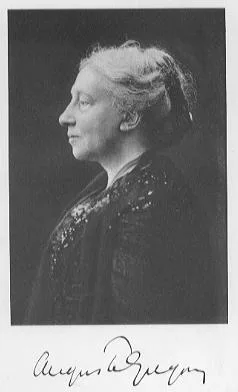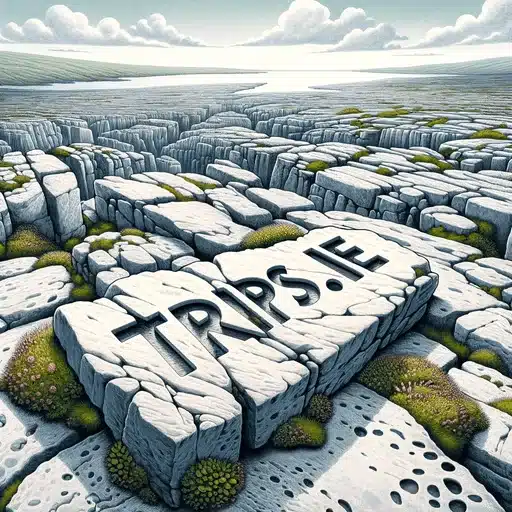
Lady Gregory’s captivating life story is one of passion, resilience, and a steadfast commitment to the arts. As a key figure in the Irish Literary Revival and co-founder of the iconic Abbey Theatre, she left an indelible mark on the world of literature and theatre.
In this article we first look at some of the key moments in her life, then follow her footsteps through some of the places which helped shape her legacy.
A Timeline of her Life
1852: Born Isabella Augusta Persse on March 15 in Roxborough, County Galway, Ireland.
1880: Marries Sir William Henry Gregory, a widower 35 years her senior.
1881: Travels to Egypt and India with her husband, fostering a love for travel and culture.
1884: Gives birth to her only surviving child, William Robert (W.B.R.) Gregory.
1892: Sir William Henry Gregory passes away.
1893: Meets W.B. Yeats, a relationship that would prove pivotal in her artistic career.
1896: Publishes her first book, “Arabian Poetry for English Readers,” a translation of Arabic works.
1899: Co-founds the Irish Literary Theatre with W.B. Yeats and Edward Martyn.
1902: Publishes “Cuchulain of Muirthemne,” her translation of Irish legends and mythology.
1903: Writes her first play, “Twenty-five,” produced at the Molesworth Hall in Dublin.
1904: Co-founds the Abbey Theatre with W.B. Yeats and Edward Martyn, marking the birth of Ireland’s national theatre.
1910: Publishes “The Kiltartan Poetry Book,” a collection of Irish folk songs and poems.
1916-1919: Supports Irish nationalism during the Irish War of Independence.
1928: Passes away on May 22 at her home in Coole Park, County Galway, Ireland.
These are some of the most important places in her life, which you can visit today.
Coole Park
County Galway
One of the most important sites associated with Lady Gregory is Coole Park, her family’s ancestral home in County Galway. Today the original house is gone, but the estate is a public park and visitors can explore its 1,000 acres of woodlands and trails. The walled garden and the famous “Autograph Tree,” where literary giants like W.B. Yeats, George Bernard Shaw, and J.M. Synge carved their initials, are must-see attractions.
Coole Park Visitor Centre houses a small collection dedicated to Lady Gregory, featuring personal artifacts, photographs, and manuscripts. There’s a fantastic Tea Room next door, open 10am – 5pm (as of April 2023).
Coole Park Opening Hours
Nature Reserve Entrance Hours
Summer: 8:00am to 7:30pm (during Daylight Saving Time)
Winter: 8:00am to 6:00pm
Coole Park Visitor Centre
Every day from 10:00am to 5:00pm
The Abbey Theatre
Dublin
Lady Gregory co-founded the Abbey Theatre in 1904 with W.B. Yeats and Edward Martyn, seeking to create a national theater for Ireland. The Abbey is still thriving today and offers a diverse program of classic Irish plays, contemporary works, and experimental productions.
Take a guided tour of the Abbey Theatre to learn about its history, Lady Gregory’s role, and its impact on Irish culture. The tours often include backstage access, offering a rare glimpse of the theater’s inner workings. Price: €18 (Standard) and €16 (Concession).
Kilmacduagh Monastery
County Galway
Just a short drive from Coole Park, Kilmacduagh Monastery is an ancient site that Lady Gregory held dear. The monastery features a round tower, the tallest of its kind in Ireland, and several well-preserved churches dating back to the 7th century.
Lady Gregory often visited Kilmacduagh Monastery for inspiration and solace. Wander the peaceful grounds and imagine the stories and legends that Lady Gregory collected from the locals, which she later incorporated into her plays and prose.
National Library of Ireland
Dublin
The National Library of Ireland in Dublin holds an extensive collection of manuscripts, letters, and personal items belonging to Lady Gregory. As part of their ongoing effort to preserve Ireland’s literary heritage, the library has digitized many of these materials, making them accessible to the public.
Visitors can explore the library’s permanent exhibitions or attend one of the many events that celebrate Irish literature, including readings, lectures, and workshops. There are free online and in-person tours – for instance in May 2023 there’s one on Seamus Heaney – find the latest here.
